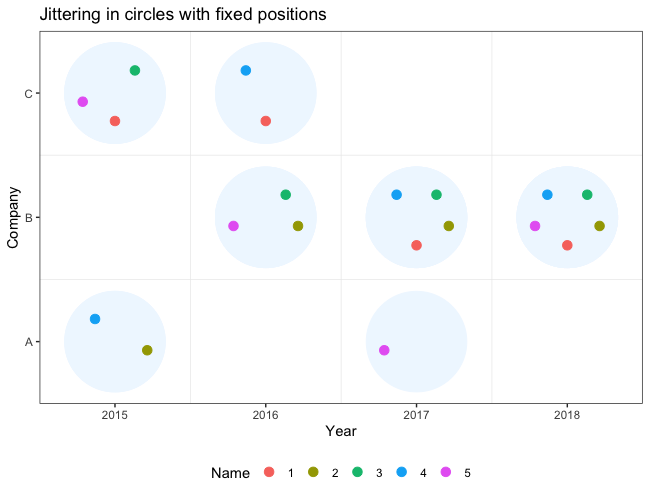library(tidyverse)
example_df <- tribble(
~Year, ~Category, ~Name,
2015, "A", "1",
2015, "A", "3",
2015, "A", "5",
2015, "C", "2",
2015, "C", "4",
2016, "A", "1",
2016, "A", "4",
2016, "B", "2",
2016, "B", "3",
2016, "B", "5",
2017, "B", "1",
2017, "B", "2",
2017, "B", "3",
2017, "B", "4",
2017, "C", "5",
2018, "B", "1",
2018, "B", "2",
2018, "B", "3",
2018, "B", "4",
2018, "B", "5"
) %>%
mutate(Year = factor(Year))ggplot(example_df, aes(x = Year, y = fct_rev(Category), color = Name)) +
geom_point(size = 3) +
labs(title = "No jittering; overplotting") +
theme(legend.position = "bottom")ggplot(example_df, aes(x = Year, y = fct_rev(Category), color = Name)) +
geom_point(size = 3, position = position_jitter()) +
labs(title = "Jittering; positioning not consistent") +
theme(legend.position = "bottom")Created on 2020-10-25 by the reprex package (v0.3.0)



I would do it this way: